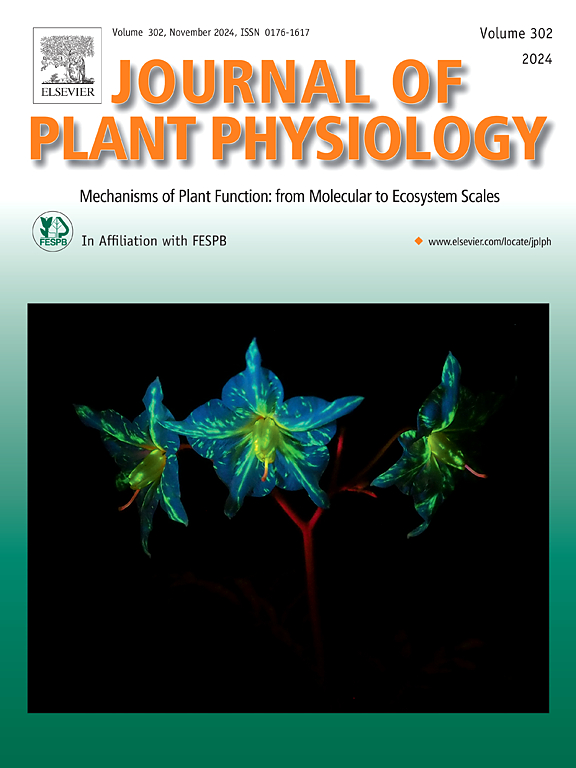5-Aminolevulinic Acid: from pyrrole biosynthetic precursor to multifunctional plant growth regulator
IF 4.1
3区 生物学
Q1 PLANT SCIENCES
引用次数: 0
Abstract
5-Aminolevulinic acid (ALA) is a non-protein δ-amino acid and an essential precursor of tetrapyrrole compound biosynthesis. Nowadays, it is a well-known natural plant growth regulator with multiple biological regulatory functions. In this review, we summarize the regulatory effects of ALA in promoting plant growth and the development of organs such as roots, stems, leaves, flowers, and fruits under normal conditions as well as stressful conditions. We emphasize the newly revealed signaling transduction and transcriptional regulatory mechanisms of ALA in maintaining root functions against abiotic stresses, improving leaf photosynthetic performance, and enhancing fruit appearance and flavor qualities as well as storage. Although most of the current reports on ALA are still apparent effect descriptions rather than mechanism explorations, studies suggest that ALA can facilitate agricultural development toward higher yield, quality, efficiency, and safety. The regulatory mechanisms of ALA at different levels need further study in the future.
5-氨基乙酰丙酸:从吡咯生物合成前体到多功能植物生长调节剂
5-氨基乙酰丙酸(ALA)是一种非蛋白质δ-氨基酸,是四吡咯类化合物生物合成的重要前体。目前,它是一种众所周知的具有多种生物调控功能的天然植物生长调节剂。本文综述了ALA在正常和逆境条件下促进植物生长和根、茎、叶、花、果实等器官发育的调控作用。我们强调了新发现的ALA在维持根系功能抵抗非生物胁迫、改善叶片光合性能、改善果实外观和风味品质以及储存方面的信号转导和转录调控机制。虽然目前关于ALA的报道多为显性效应描述而非机制探索,但研究表明ALA可以促进农业向高产、优质、高效、安全的方向发展。ALA在不同水平上的调控机制有待进一步研究。
本文章由计算机程序翻译,如有差异,请以英文原文为准。
求助全文
约1分钟内获得全文
求助全文
来源期刊

Journal of plant physiology
生物-植物科学
CiteScore
7.20
自引率
4.70%
发文量
196
审稿时长
32 days
期刊介绍:
The Journal of Plant Physiology is a broad-spectrum journal that welcomes high-quality submissions in all major areas of plant physiology, including plant biochemistry, functional biotechnology, computational and synthetic plant biology, growth and development, photosynthesis and respiration, transport and translocation, plant-microbe interactions, biotic and abiotic stress. Studies are welcome at all levels of integration ranging from molecules and cells to organisms and their environments and are expected to use state-of-the-art methodologies. Pure gene expression studies are not within the focus of our journal. To be considered for publication, papers must significantly contribute to the mechanistic understanding of physiological processes, and not be merely descriptive, or confirmatory of previous results. We encourage the submission of papers that explore the physiology of non-model as well as accepted model species and those that bridge basic and applied research. For instance, studies on agricultural plants that show new physiological mechanisms to improve agricultural efficiency are welcome. Studies performed under uncontrolled situations (e.g. field conditions) not providing mechanistic insight will not be considered for publication.
The Journal of Plant Physiology publishes several types of articles: Original Research Articles, Reviews, Perspectives Articles, and Short Communications. Reviews and Perspectives will be solicited by the Editors; unsolicited reviews are also welcome but only from authors with a strong track record in the field of the review. Original research papers comprise the majority of published contributions.
 求助内容:
求助内容: 应助结果提醒方式:
应助结果提醒方式:


